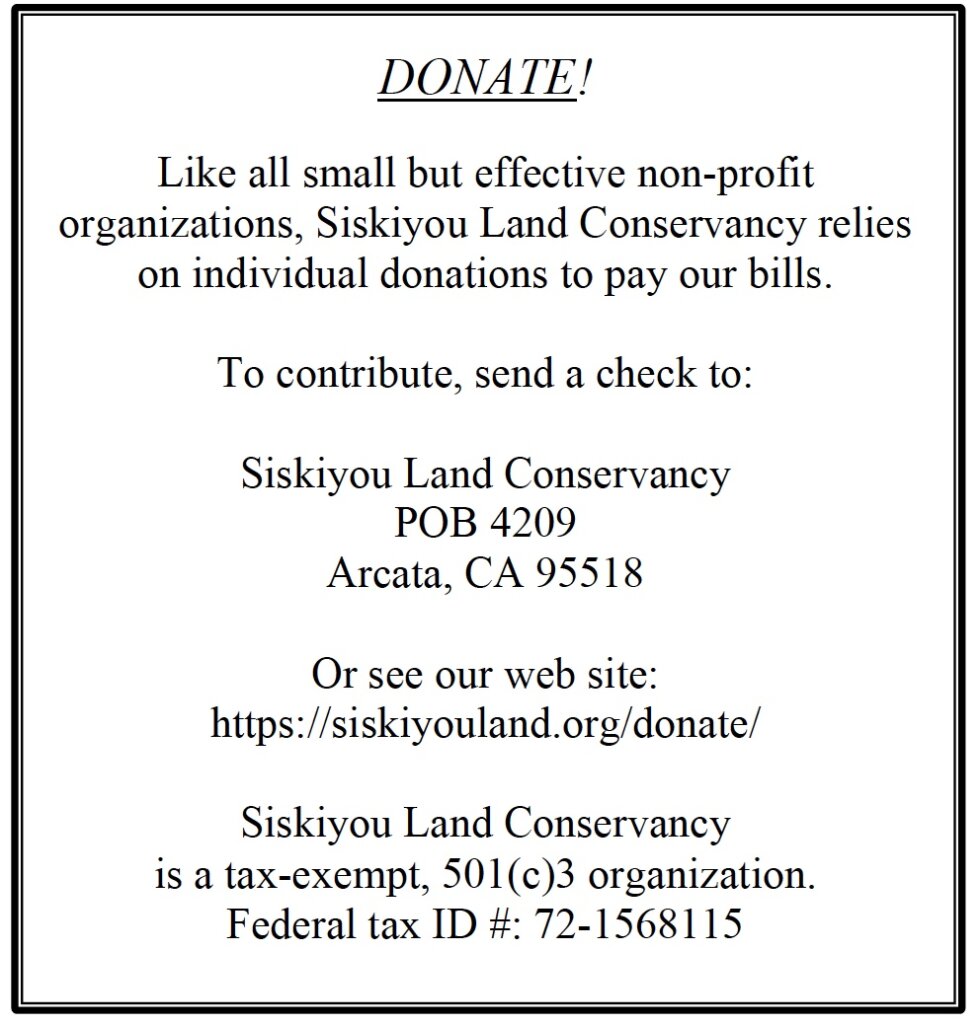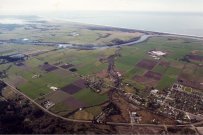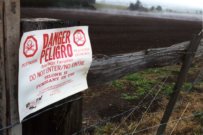Still slogging through the state’s malfeasant muck at the Smith River estuary!
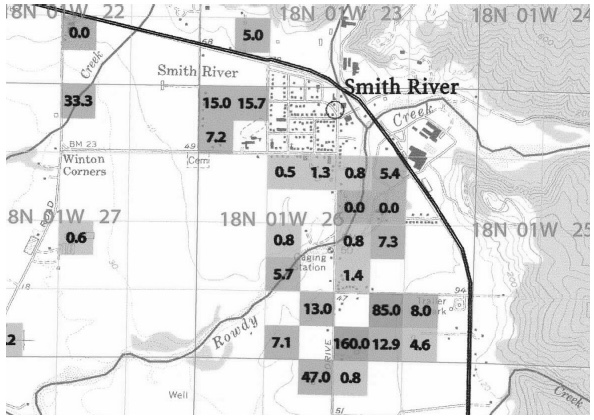
estuary by the carcinogenic pesticide 1,2-
dichloropropane. Map created in 2002 by
the Smith River Project, which merged
with Siskiyou Land Conservancy in 2004.
During the past five years the California North Coast Regional Water Quality Control Board has taken several steps backward in what was already an illusory “effort” to rid the vital Smith River estuary of agricultural pesticides. In 2011 the state finally initiated an “irrigated lands discharge permit” process for Easter lily farmers whose pesticides are poisoning water quality in the estuary. This was after state and later federal scientists (responding to pressure by Siskiyou Land Conservancy) found several instances of “acute” and “chronic” reproductive toxicity in the salmonid food chain in estuary feeder streams— toxicity attributable to the seventeen pesticides also found in the streams. Yet in 2018 Water Board officials abandoned the Irrigated Lands program and initiated a “management plan” to allow lily growers to self-monitor their impacts. In contrast, that same year the National Marine Fisheries Service issued to lily growers a “Section 9” letter informing them that their January 2024 Historic contamination at the Smith River estuary by the carcinogenic pesticide 1,2- dichloropropane. Map created in 2002 by the Smith River Project, which merged with Siskiyou Land Conservancy in 2004. Siskiyou Land Conservancy Annual Newsletter 2024 2 pesticide contamination was in violation of the federal Endangered Species Act. Siskiyou Land Conservancy and the two other environmental NGOs that were stakeholders in creating the Irrigated Lands Discharge permit were not invited to craft the management plan. Indeed, we were not even informed that the “Irrigated Lands” process had ended and another had begun. Last year the Water Board released its final “plan” for the estuary—a document that we view largely as a hoax. The first annual self-monitoring “report” from lily growers was six months late. It may not have appeared at all had Siskiyou Land Conservancy not pressured the Water Board (for a month) to produce it.
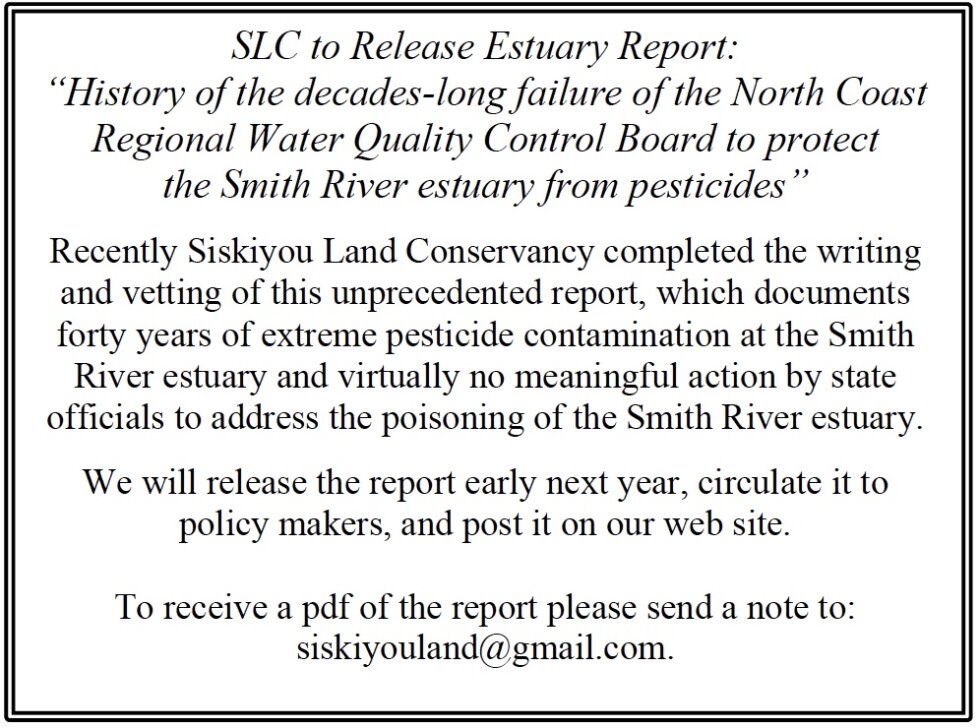
The importance of protecting the state’s healthiest salmonid habitat cannot be overstated. The state’s refusal to protect the Smith River estuary from pesticides stands in direct violation of several state and federal statutes. What’s left is legal action at the federal level. Pesticide destruction of the estuary did not end with the Section 9 letter of 2018. If anything the contamination, through undiminished pesticide applications as well as bioaccumulation of many of the pesticides, has only gotten worse. Lily growers remain in violation of state and federal laws, and the National Marine Fisheries Service, if not the US Justice Department must step in to enforce the Endangered Species Act and the Clean Water Act.
CalTrans and the US Forest Service logging ancient forests following wildfires in the Smith River National Recreation Area
Travelers on US Highway 199, along the Wild and Scenic Middle Fork Smith River, have been greeted by a grim specter along the road. It’s not the patchwork fire mosaic that now dominates the view across a short stretch of the highway, as the Smith River Complex fires have largely provided a positive addition to the ecology of this fire-evolved habitat.
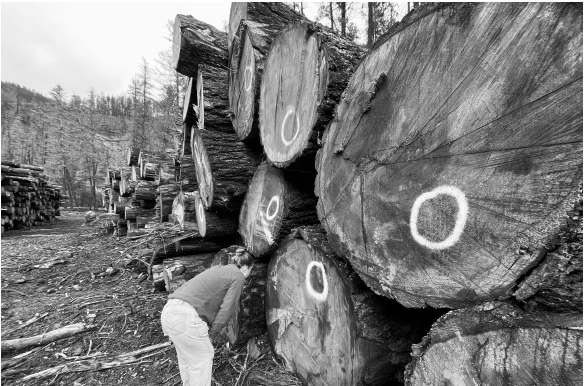
What’s grim has been clear-cut logging, of live trees as well as dead, by CalTrans and the US Forest Service. Along the highway, a large number of the leveled trees (mostly old-growth Douglas fir) were greater than five feet in diameter and exceeded 200 years old. CalTrans has been logging the allegedly protected forest in the guise of “public safety,” but really what we’re seeing is another attempt by what may be California’s most rogue agency claim a wide swath of turf in service of what one CalTrans official has previously identified as a need to make the circuitous Highway 199 “four lanes all the way to the Oregon border.” Earlier last year CalTrans cut down several giant ancient redwood trees standing alongside Highway 199 in the heart of Jedediah Smith Redwoods State Park.
Please contact Governor Gavin Newsom (https://www.gov.ca.gov/contact/), state Senator Mike McGuire (https://sd02.senate.ca.gov/contact), and state Assemblyman Jim Wood (https://a02.asmdc.org/contact) and ask them to rein in CalTrans’ destructive logging. (Also ask them to compel state and federal officials to enforce the Endangered Species Act at the Smith River estuary.)
Meanwhile, upslope, Six Rivers National Forest is clear-cutting swaths 160 feet wide on both sides of Forest Service roads that lead through burned areas. Much of this land is in old-growth forest and would otherwise be protected. The Forest Service not only authorized the logging, but the agency gets to keep the proceeds for its annual budget. Like CalTrans, the Forest Service is only half done with its logging and plans to continue cutting in spring. Please contact Congressman Jared Huffman to voice your objection to the treatment of our protected old-growth forests. https://huffman.house.gov/contact/email-me (Please also invoke the Smith River Estuary.) Also send a note to Ted McArthur, Forest Supervisor of Six Rivers National Forest: ted.mcarthur@usda.gov, and cc Kathy Allen, district ranger for the Smith River National Recreation Area: kathy.m.allen@usda.gov.
SLC launches Widespread Distributed Solar study
We are excited about our newest project: A study of the potential for widespread distributed solar (WDS) arrays on rooftops throughout Humboldt County. The idea is to examine whether Humboldt County can provide most of its power needs through rooftop and parking-lot-top solar installations, thus diminishing the need for impactful centralized power production.
None of Humboldt County’s current electricity sources, from PG&E and the Redwood Coast Energy Authority, are truly “green.” Seventy-seven percent of local power comes from PG&E’s natural gas plant that utilizes fracked gas, and 19% comes from biomass that is both polluting Siskiyou Land Conservancy Annual Newsletter 2024 4 and contributes to deforestation. Yet local officials continue to prioritize large, centralized power infrastructure that benefits corporate energy companies rather than the consuming public. For instance, Humboldt County Supervisor Rex Bohn is pushing for construction of massive new biomass plants in Tuolumne and Lassen Counties that would produce wood pellets out of our beleaguered forests to feed large centralized power plants in the United States, Asia, and Europe.
Our objectives for the solar project are too numerous to list here, but they include:
- Evaluate and quantify the amount of electricity that could be produced in Humboldt Countythrough decentralized solar power generation.
- Evaluate the costs of building local WDS networks.
- Determine the economic benefits/costs of WDS, including: employment; potential revenues andequity to owners; connecting low-income and underserved communities; effects on utility billsfor renters; incentives to transition to electric vehicles (EVs), heat pumps, cooking, and tools.
- Evaluate the extent to which WDS could reduce or eliminate the need for electricity fromnatural gas, biomass, or long distance transmission of electricity.
The research methods and findings from this study could serve as a template for other rural counties.We have contracted with a Cal Poly Humboldt graduate to oversee the study, and we are seeking funding to launch and complete this unique analysis.
Friend-raising
As Siskiyou Land Conservancy expands our programs and impact on the North Coast, we also want to grow our base of public support. Please share this newsletter with a friend. To receive information from us send a note to: siskiyouland@gmail.com.
